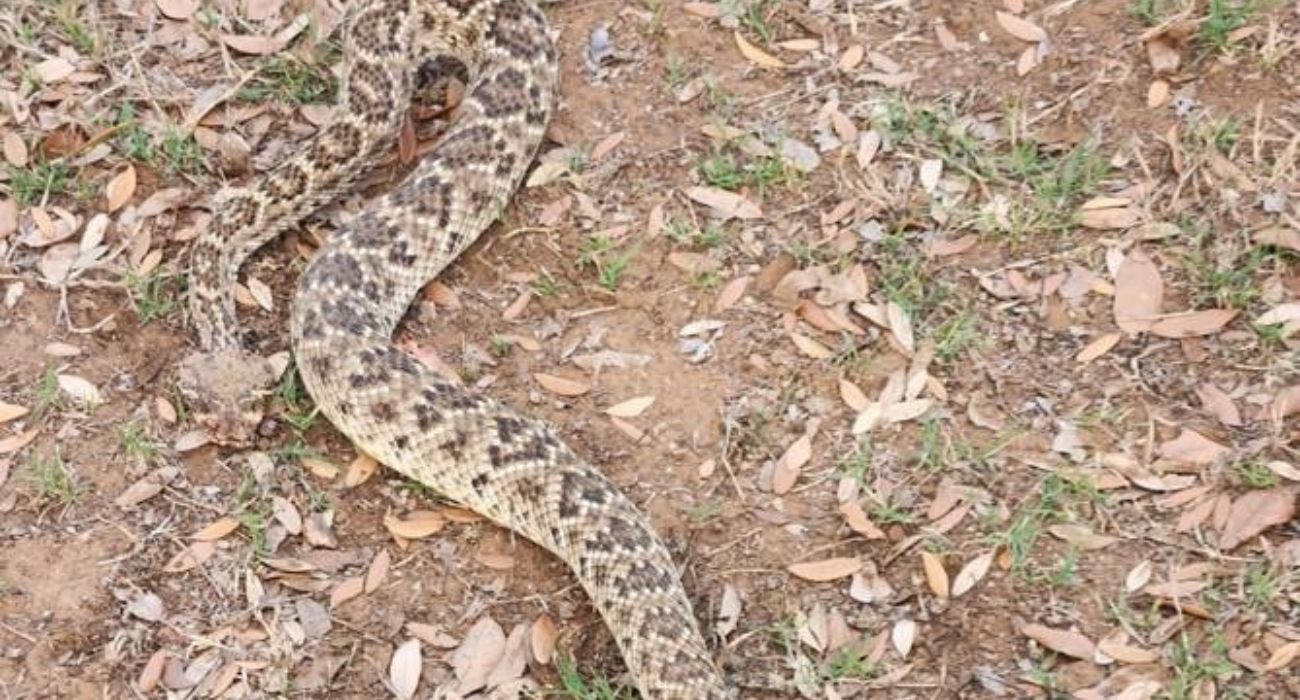With spring approaching and the weather warming up, snakes are emerging from their cozy winter dens to feed and take in some much-needed sun rays.
Snakes usually start to pop up in late February or early March. All winter the cold-blooded serpents have been hiding out underground, conserving energy. Now they need to wake up their metabolisms and get on feeding, mating, and other snaky things.
Rattlesnakes are some of the most common venomous snakes in Texas, according to Texas Parks and Wildlife (TPW). Ten species reside across the Lone Star State, except for the far eastern part.
Judging by a post from Chris Suchan, a meteorologist at News 4 San Antonio, one rattler has already been spotted in Moore, a rural town outside of San Antonio.
Like the one pictured, it is common to see rattlesnakes by themselves in the spring. They gather in groups generally between July and October in order to court and breed. A female rattler typically reproduces once every two to three years. But when she does, she will have between six to 21 young.
The most common type of rattlesnake in Texas is the Western diamondback. Its signature feature is a black-and-white banded tail. It can grow anywhere from two to five feet in length.
Further west, it may be more common to see a black-tail rattlesnake, which as the name suggests, has a grayish body and a black tail.
In an interview with San Antonio Express-News, a herpetologist with TPW, Paul Crump, gave some guidelines for what to do if you encounter a rattlesnake.
- Slippery as a snake. Rattlesnakes know how to hide. While they can often be found hidden in rocky crevices, any hidey-hole may serve as a potential den.
- Beware the snake in the grass. A lot of human rattlesnake bites happen when people try to touch the snake, according to Crump. You should avoid trying to move or pick up a rattlesnake if you see one.
- Not prone to hissy fits. Snakes are not aggressive to humans by nature. They usually only bite if they feel threatened and it is their only way out, said Crump. If you spot a snake, walk away from it slowly and calmly. Maintain a distance of at least six to eight feet from the snake.
Crump suggests keeping your lawn free of brush and mowed to avoid having snakes in your yard. If there is no area for the snakes to be able to easily take shelter or feed, they will not stick around.
In fact, the recent increase in residents and development of land seen in Texas will likely lead to fewer snakes this season, according to Crump. A reduction of habitable land for them means a smaller snake population.
Overall, Crump hopes Texans won’t look too unfavorably upon their slithering neighbor. Snakes are important to the ecosystem and control certain rodent pests by eating them.
It is important to not let a fear of snakes keep anyone from enjoying the outdoors, according to Crump.
For anyone planning an activity in an area likely to house snakes, TPW suggests wearing suitable footwear or even snake-proof pants.






